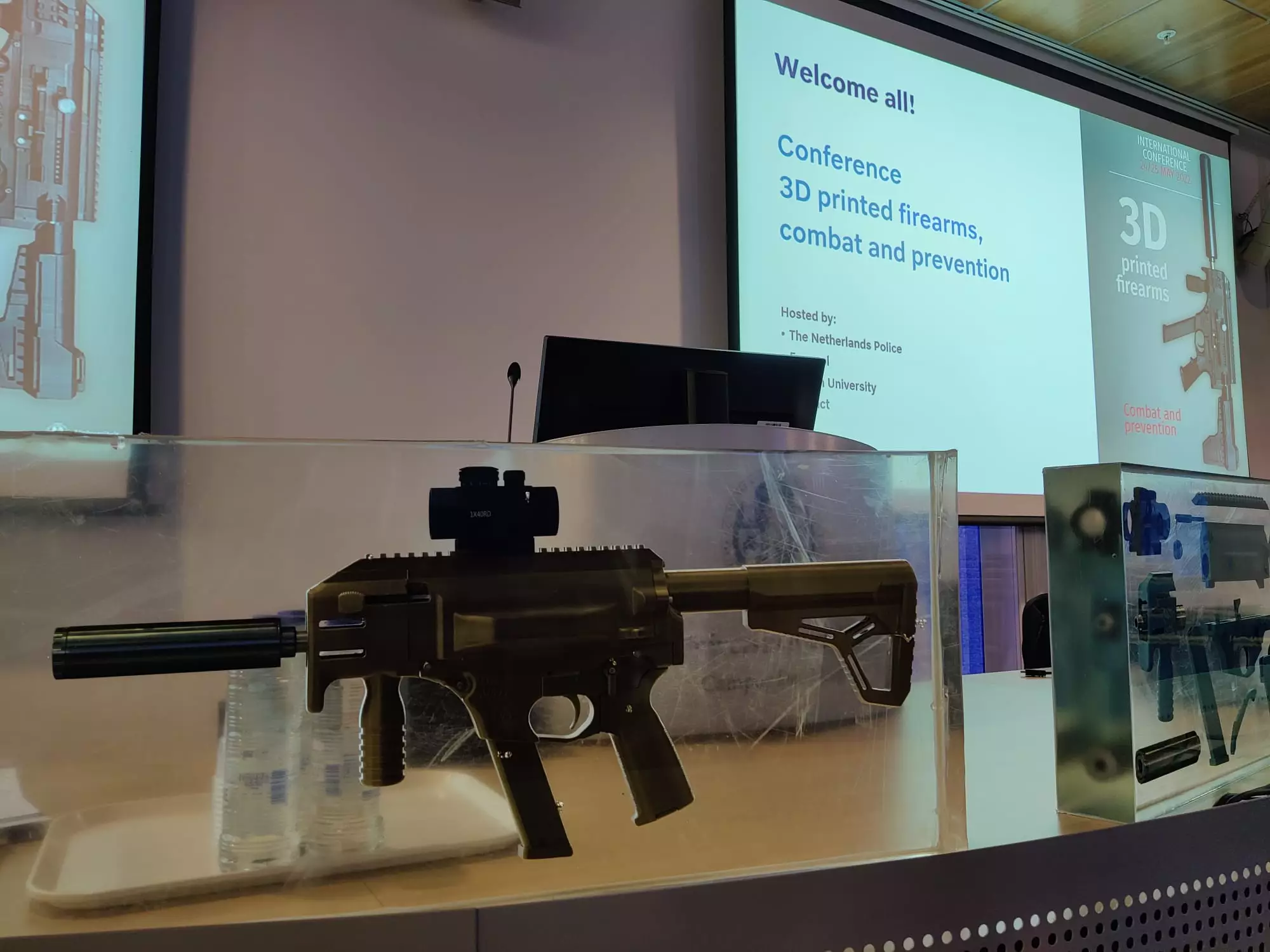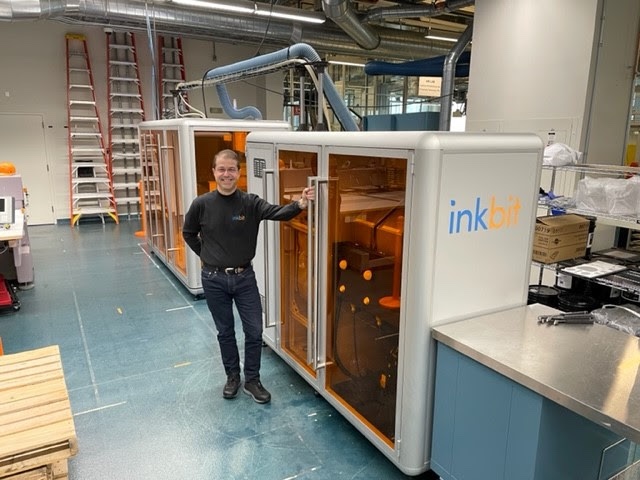3D printed gun violence is on the rise. Recent events, including mass shootings at an elementary school in Texas, a deadly assault at a medical facility in Oklahoma, and last year's anti-Semitic rampage at a German synagogue, led to serious concerns surrounding ghost guns, particularly 3D printed ones. Taking these events into account, as well as a cascade of 3D printed gun-related arrests worldwide, several governments are taking measures to restrict privately made firearms without serial numbers.
Specifically, Europol organized a 3D printed firearms conference in the Hague last May (the first one in Europe), while the Biden administration called for an assault weapons ban and other measures to curb gun violence. Undoubtedly, 3D printed guns or gun parts that some people choose to create at home with their machines have increased concerns that homemade 3D guns could live up to their prematurely violent reputation.
How Many People Have Been Arrested for 3D Printed Guns?
In light of these events, 3DPrint.com began exploring recent 3D printed gun incidents and confirmed that over 90 people have been arrested in the last three years. The number of arrests is higher in countries like Canada, the U.S., and Australia, representing 18%, 44%, and 17% out of total arrests, respectively. As we dive more deeply into the emerging trends, it is noticeable that North America leads the arrest statistics, followed by Europe, and then Oceania.

However, it's important to note that not every country reports all of its arrests, so there will be more than we accounted for. For example, in the U.S., arrest records are public, yet each state can determine whether they want them to be readily accessible. Even in states that consider arrest records to be public information, there may be exceptions, and some will not be released publicly. In countries like Australia, if a case attracts media attention, there is little a defendant can do to avoid the information getting published.
Because ghost guns and 3D printed guns in particular are almost impossible to trace, the job of law enforcement agencies to prosecute them is made even tougher. In the last decade, police forces found out several people were making guns at home with 3D printers as part of organized crime raids or investigations into other criminal activities. For instance, in May 2021, two men and one woman were arrested in the town of Keighley in the United Kingdom as part of an investigation into right-wing terrorism. All three were charged with possessing components of 3D printed weapons, and two were members of an online group where terror manuals and weapons guides were shared among neo-Nazis. As a result, they were all found guilty of terror offenses a year later and convicted.

3D printed gun parts. Image courtesy of Saskatoon Police Service.
The Era of Homemade Firearms
Ever since 2013, when gun-rights activist Cody Wilson built the Liberator, the world's first-ever 3D printed gun, he launched what would be known as an era of homemade firearms. Using a Stratasys Dimension series 3D printer purchased on eBay, the then law student spend very little money to create the gun, using metal only for the firing pin, which strikes the primer of a cartridge to ignite the charge and fire the weapon.
From the public data available, we have noted that the number of arrests has gone up significantly since 2019. Only 15% of the total arrests for 3D printing guns occurred between 2013 and 2019. In October 2013, a man from Manchester, U.K., was arrested after police suspected he was making 3D printed components for what they called at the time "next-generation weapons." Thought to be the first-ever seizure of 3D printed gun parts in the U.K. (and most likely the world), these, along with a 3D printer, were discovered during a gang raid as part of Challenger, one of the largest multi-agency operations to target organized crime in that city.
Then, in 2014, a man was arrested in Japan for possessing 3D printed handguns, after five devices were found during a police raid on his house. The 27-year-old college employee from Kawasaki was charged for illegally possessing firearms made with 3D printers, marking the first such case in Japan, a country that takes pride in its low crime rate and has strictly regulated gun ownership.
Several cases followed, including at least five in Australia, eight in the U.S., as well as a few in Europe, including in Sweden and the U.K. But that was before 2020, when the number of arrestees began to increase from just a handful to more than a dozen. The number of arrests then doubled and tripled in 2021 and 2022 respectively, compared to the previous year.

2022: The Year of 3D Printed Gun Arrests
According to the data, 42% of all 3D printed gun-related arrests were in 2022, that’s roughly 44 people arrested. We also estimate that roughly 31% of all arrests occurred in 2021, and 12% in 2020. This jump in the number of 3D printed gun crimes detected through police activity has alerted law enforcement worldwide. During the International Conference on 3D Printed Firearms, organized by Europol and the Dutch National Police in the framework of EMPACT Firearms and hosted at the University of Leiden, some 120 participants from 20 countries addressed the latest challenges that security forces face to counter this threat.
The team leader of Europol's Analysis Project Weapons and Explosives, Martin van der Meij, said at the conference that there is a growing number of 3D printed weapons being seized in investigations across Europe and that the threat is "very much on Europol's radar."

3D printed guns showcased at the International Conference on 3D Printed Firearms. Image courtesy of Europol.
Across the Atlantic, President Joe Biden is trying to persuade a reluctant Congress to tighten gun laws in the aftermath of horrific mass shootings in recent weeks in the U.S. According to the Gun Violence Archive, there have already been more than 240 mass shootings this year in the US in which four or more people were shot or killed. That's not to say that 3D printed guns were involved in all of these events, but they have been found in a few of attackers' homes in 2022 and earlier.
The U.S. hasn't passed a major federal gun control measure since the 2012 Sandy Hook Elementary School shooting in Connecticut that left 26 dead. Finding a middle ground to compromise over gun safety legislation will not be easy. In late May, President Joe Biden talked about banning most handguns. Then, on June 2, the House Judiciary Committee approved a wide-ranging package of gun control legislation called the "Protecting Our Kids Act." The eight-bill package includes calls to raise the age limits on semi-automatic rifle purchases from 18 to 21 years old; creating a grant program to buy back large-capacity magazines; establishing voluntary, safe practices for firearms storage; and building on executive measures to ban bump stock devices and so-called ghost guns made with 3D printing.
Earlier this year, the Biden Administration said it would introduce ghost gun reforms to the 3D printing industry. Known as "Final Rule 2021R-05F," this rule redefines firearm parts and bans the business of manufacturing the most accessible ghost guns. In addition, the rule will affect upper receivers, suppressors, and CAD files for 3D printing. Even simple marketing materials—like instructions for how to assemble an 80 lower jig or how to mill an 80 percent lower receiver—may be rendered illegal at the sole discretion of the U.S. Bureau of Alcohol, Tobacco, Firearms, and Explosives (ATF) on a case by case basis.
Whether partly or entirely manufactured with a 3D printer, these types of "ghost guns" are becoming a headache for many law enforcement agencies worldwide. Especially since many of the people arrested have been directly related to white supremacist and neo-Nazi movements. However, it will be difficult to curtail 3D printed guns, mainly since any efforts to regulate or even ban 3D guns must satisfy constitutional scrutiny under both the First and Second Amendments. So, even though the debate over 3D printed guns is far from over, the striking number of arrests in recent years is drawing attention from lawmakers and security forces, but where that trail will lead, we still don't know.
The post 3D Printed Gun Arrests Tripled in Less Than Two Years – 3DPrint.com Investigates appeared first on 3DPrint.com | The Voice of 3D Printing / Additive Manufacturing.










